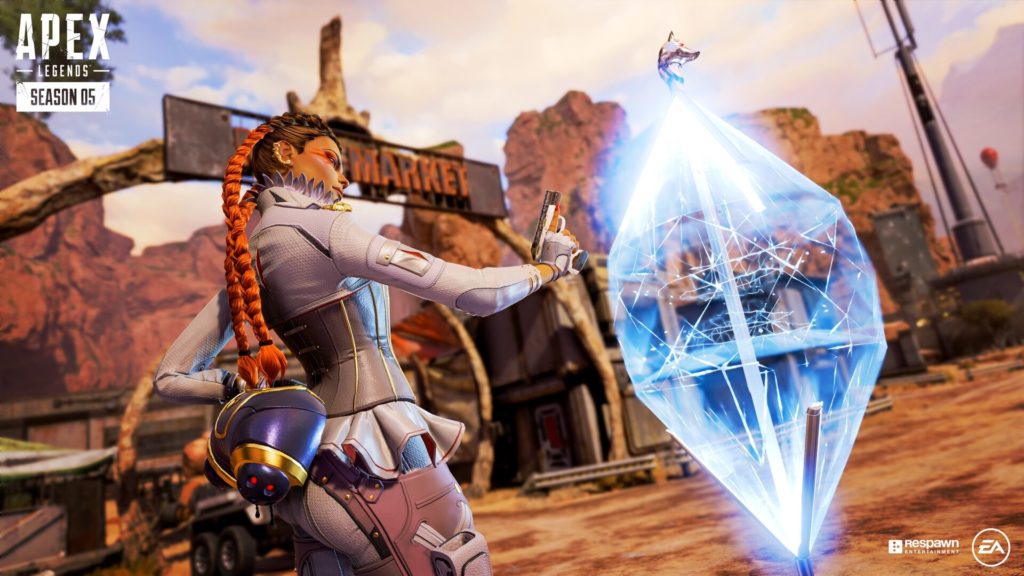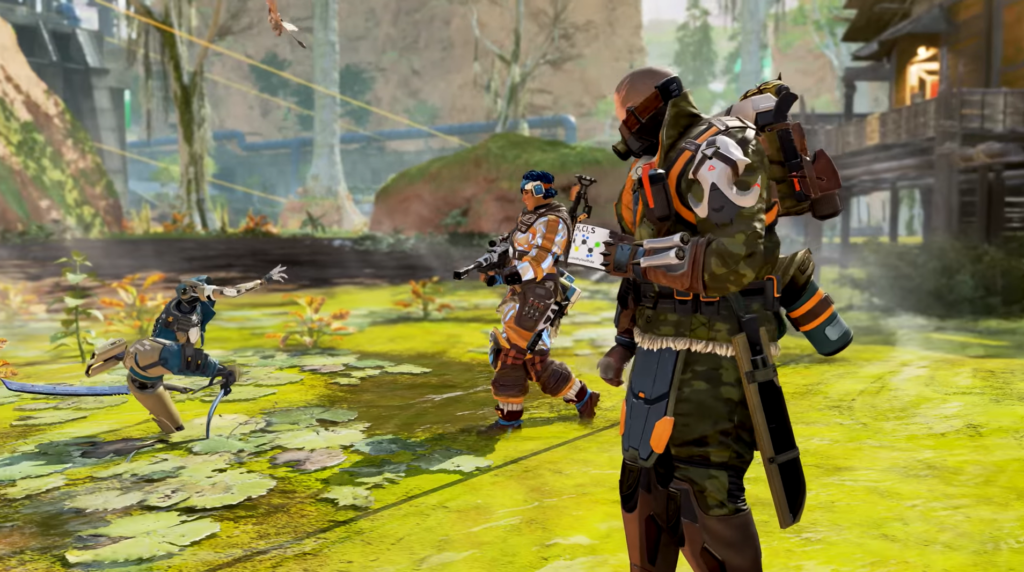Lag is arguably one of the worst things that can happen to you in any multiplayer game. When it comes to Apex Legends, your network’s slow performance might be the difference between victory or defeat. Lag can be caused by server overload, which can occur when a huge amount of people are trying to log into the game at once; it can also happen on the player’s end due to problems with your ISP, router, PC and more.
The quality of your connection and the servers of Apex play a considerable role when it comes to assuring a decent connection. There are a lot of variables at play that can cause lag no matter which platform you’re on. Troubleshooting your connection issues can turn into a time-consuming process if you don’t know what to look for. We’ve gathered the following list of steps you can try to fix your lag and jump straight back into the action.
Here’s how to reduce lag in Apex.
Make sure your problem is lag
It might sound strange, but lag isn’t always the number one issue with a game’s online performance. For PC gamers, most “lag” issues are actually low framerate issues. To increase your framerate, you’ll want to troubleshoot your internet connection and make sure your hardware isn’t holding you back.
If you’re suffering from terrible FPS, this could mean that your system requirements on PC might not be up to the standard that Apex requires. Make sure all your parts are up to date and satisfy at least the minimum requirements listed below. If your PC doesn’t meet the minimum requirements in one or more areas, Apex may still run, but you’ll likely experience suboptimal performance.
Minimum system requirements
- OS: 64-bit Windows 7
- CPU: Intel Core i3-6300 3.8GHz / AMD FX-4350 4.2 GHz Quad-Core Processor
- RAM: 6GB
- GPU: NVIDIA GeForce GT 640 / Radeon HD 7730
- GPU RAM: 1 GB
- Storage: Minimum 22 GB of free space
Recommended system requirements
- OS: 64-bit Windows 7
- CPU: Intel i5 3570K or equivalent
- RAM: 8GB
- GPU: Nvidia GeForce GTX 970 / AMD Radeon R9 290
- GPU RAM: 8GB
- Storage: Minimum 22 GB of free space
If you meet the system requirements but are still having framerate or lag issues, try turning all of the game’s visual settings, such as graphics, view distance, and shadows, to the lowest option. Sure, the game might look awful, but at least you’ll be able to play it smoothly. In fact, many pro players turn their settings all the way down in order to get the highest FPS possible.
Check for server issues

Though Apex servers tend to be durable and don’t often crack under heavy load, big content updates like a new season or event can cause a surge of new and returning players. An influx of players can overwhelm the servers, as can a concentrated burst of traffic like a DDoS attack. Sometimes, the servers just go down, and there isn’t much the general population can do.
Keep an eye on Down Detector, Apex Legends Status, and Apex’s official Twitter account for any updates regarding the game’s servers. If there’s an ongoing outage, none of the fixes in this list will help you get back into Apex, as the servers are the source of the problem, not your connection. All you can do is wait for developer Respawn and EA to issue a fix.
Check your network’s bandwidth
If there isn’t an outage going on and you’re experiencing lag for the first time, it might be something on your end. Start by improving your network’s bandwidth by turning off anything that could affect your connection, such as Twitch or Netflix. Reboot your router and do everything in your power to make sure Apex is your bandwidth’s priority when playing if you want to have a good time.
If you’re playing the game on console, you can also make sure that all your current downloads are suspended while playing the game. Your connection could suffer if you’re downloading or installing an update for a different game.
Connecting to the internet via Wi-Fi can also introduce some lag. While you should be fine most of the time, your gaming device’s wireless connection chip or your router may have some trouble. If resetting your modem doesn’t do anything for you, use an ethernet cable instead of connecting wirelessly. This will ensure that you have the fastest connection between your console/PC and your modem.
Optimize your router

Some router issues may not resolve themselves with a simple reset. Keeping your router or PC on for weeks without turning it off can put some strain on your devices; they may just need a good night’s sleep. If you aren’t living alone or have shared your password with your neighbors, there could also be other parties connected to your network that are clogging your bandwidth. Check your network traffic to see what’s going on.
You can warn anyone with excessive bandwidth habits to not do whatever they’re doing while you’re gaming or go into your modem interface to limit their available bandwidth. This process changes from router to router, so make sure to read through your user guide or contact your ISP for additional assistance.
While you’re checking out your modem’s interface, make sure that you can verify all the devices connected to your network. Change your password if there are unfamiliar connections. You don’t want anyone you’re not familiar with hogging your bandwidth.
Restart the game
There’s a reason why so many guides recommend uninstalling and reinstalling games: it fixes a ton of problems. If you only have lag issues once or twice while playing, your problems might have more to do with bugs than lag, so restarting the game could be a quick fix for the issues you’re facing.
In cases where restarting fixes your problems but they still arise after a certain amount of time, we recommend contacting EA’s help desk. Providing logs or explaining all the troubleshooting steps you’ve tried out can help the support team narrow down the issue.
Reinstall Apex

Sometimes your game might not have installed correctly during the installation process. While games do an excellent job of verifying the integrity of their own cache, some minor bugs can go unnoticed. Even though it sounds dreadful, reinstalling your game from scratch can assure that Apex’s files aren’t to blame for your connectivity issues.
Deleting all files related to Apex after performing an automated uninstallation is also recommended. This will let you reinstall Apex like it’s the first time you’re downloading it to your computer. A fresh install will increase your chances for success.
In the rare case that none of the above solutions work and Apex’s support fails to find the root of your causes, you may need to contact your ISP because there may be problems with your home’s internet infrastructure, particularly if you’re also having internet or lag issues while performing other actions on your PC or console. Walk your ISP through all the solutions you’ve tried and see if they have any suggestions. Chances are they’ll be able to fix your problem remotely or send a crew to your house to inspect your cables.


